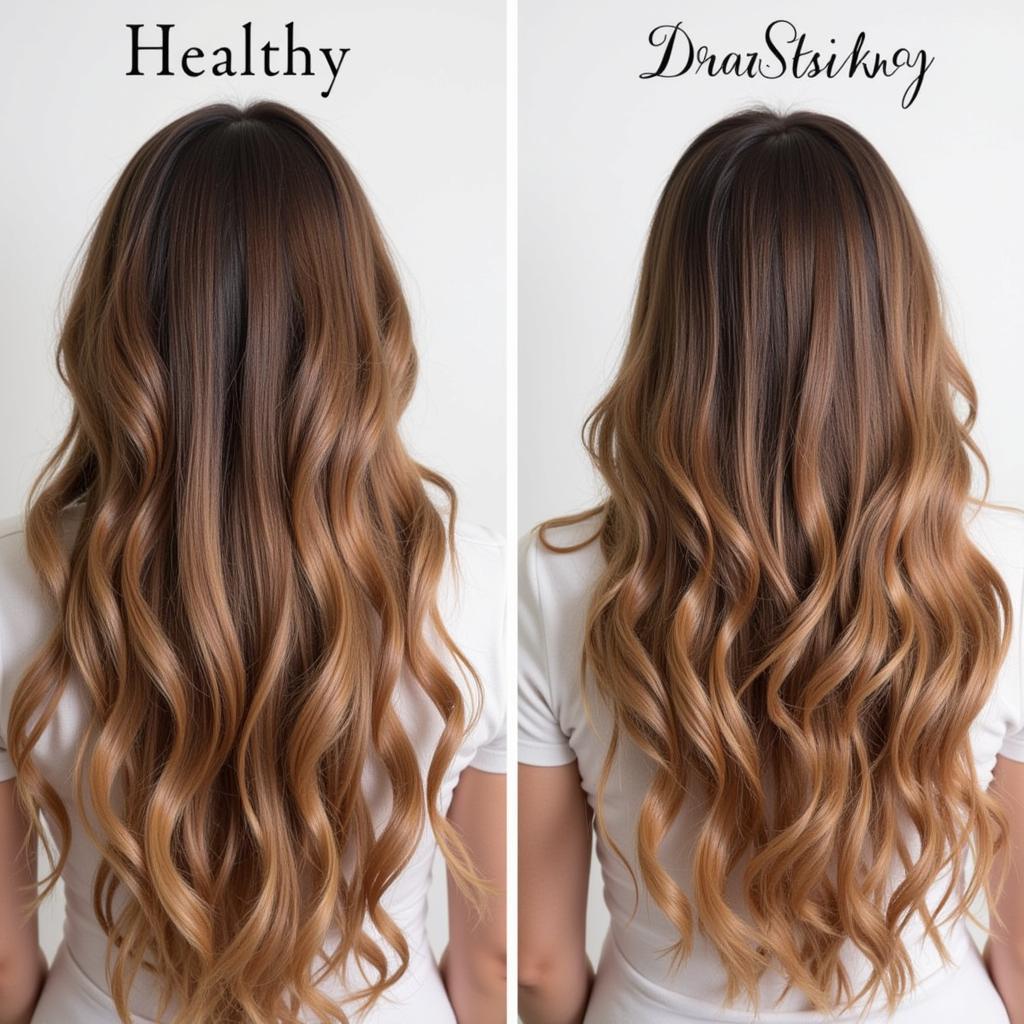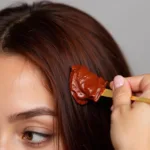Can coloring hair make it fall out? This is a common concern for many people who enjoy changing their hair color. While hair coloring itself doesn’t typically cause hair loss, certain practices and reactions can lead to breakage or thinning, sometimes mistaken for hair loss. Let’s delve into the facts and separate myth from reality.
Understanding the Hair Coloring Process
Hair coloring involves using chemicals to alter the natural pigment of your hair. can coloring your hair make it fall out These chemicals, particularly in permanent dyes, can weaken the hair shaft, making it more prone to breakage. However, this breakage doesn’t occur at the root, meaning it isn’t true hair loss. It simply means the hair strand is breaking somewhere along its length.
Does Bleaching Cause Hair Loss?
Bleaching, a process that removes the natural pigment from hair, is often a precursor to dyeing, especially when going lighter. It uses stronger chemicals than regular dyes and can cause more damage, leading to increased breakage. However, again, this is breakage, not hair loss from the root.
Allergic Reactions and Hair Loss
Sometimes, an allergic reaction to hair dye can cause contact dermatitis on the scalp. This can lead to inflammation, itching, and even temporary hair loss. how much to color hair However, this hair loss is usually temporary and the hair will grow back once the inflammation subsides. It’s crucial to perform a patch test before dyeing your hair, especially if you have sensitive skin or have experienced reactions in the past.
How to Identify an Allergic Reaction
Common signs of an allergic reaction to hair dye include redness, itching, burning, swelling, and blisters on the scalp, face, or neck. If you experience any of these symptoms, discontinue use immediately and consult a dermatologist.
Minimizing the Risk of Hair Breakage
While hair coloring doesn’t directly cause hair loss, it can contribute to breakage. Here are some tips to minimize the risk:
- Use a deep conditioner: Regular deep conditioning treatments help to strengthen and moisturize the hair, reducing breakage.
- Avoid overlapping color: When retouching your roots, apply color only to the new growth to avoid further stressing previously colored hair.
- Limit heat styling: Excessive heat from tools like hair dryers, straighteners, and curling irons can weaken the hair shaft, especially after coloring. qué color de cabello le queda a las morenas
- Choose gentler hair color options: Opt for semi-permanent or demi-permanent dyes, as they contain lower concentrations of chemicals.
- what is the color of ginger hair Consult a professional: If you’re concerned about hair damage, consult a professional stylist for advice on the best coloring methods and products for your hair type.
“Over-processing hair with bleach or high-lift color can definitely lead to breakage,” says renowned hair stylist, Amelia Dubois. “However, true hair loss from the follicle is rare and usually related to other underlying factors.”
Can Coloring Hair Cause Hair to Thin?
While coloring itself doesn’t cause thinning, excessive breakage due to chemical damage can give the appearance of thinner hair. This is especially true if the breakage occurs closer to the scalp.
 Hair Breakage and Thinning
Hair Breakage and Thinning
Conclusion
So, can coloring hair make it fall out? The answer is generally no. While hair dye can weaken the hair and make it more susceptible to breakage, it doesn’t typically cause hair to fall out from the root. By taking proper care of your hair and following the tips outlined above, you can minimize the risk of damage and enjoy vibrant, healthy-looking colored hair. how to color hair burgundy If you’re still concerned, consult a professional stylist or dermatologist.
FAQ
- Can hair dye permanently damage my hair? While it can weaken the hair, permanent damage is usually avoidable with proper care.
- How often should I color my hair? It depends on the type of dye and your hair’s condition. Consult a stylist for personalized recommendations.
- What should I do if I experience an allergic reaction? Discontinue use immediately and consult a dermatologist.
- Will my hair grow back if it falls out due to an allergic reaction? Typically, yes, once the inflammation subsides.
- Are there natural hair dye alternatives? Yes, options like henna and indigo exist, but they may not offer the same range of colors or longevity.
- How can I prevent my hair from breaking after coloring? Deep condition regularly, avoid heat styling, and limit chemical treatments.
- Can I color my hair while pregnant? Consult your doctor for advice, as some chemicals may be harmful during pregnancy.
Scenarios
- Scenario 1: A client experiences itching and redness after coloring their hair at home. This indicates a possible allergic reaction, and they should discontinue use and consult a dermatologist.
- Scenario 2: A client notices their hair feels thinner after bleaching. This is likely due to breakage, and they should focus on strengthening treatments and minimizing further chemical processing.
Further Reading
For more information on hair coloring and care, check out our other articles on can coloring your hair make it fall out.
Need help with your hair color journey? Contact us at 0373298888, email us at [email protected], or visit us at 86 Cầu Giấy, Hà Nội. Our 24/7 customer service team is ready to assist you.

